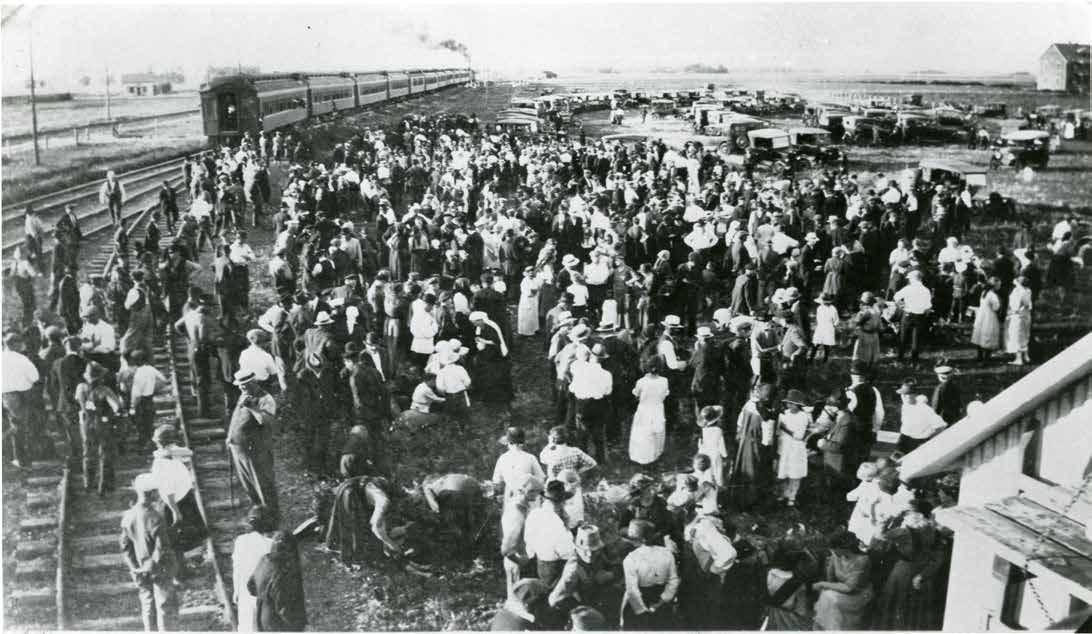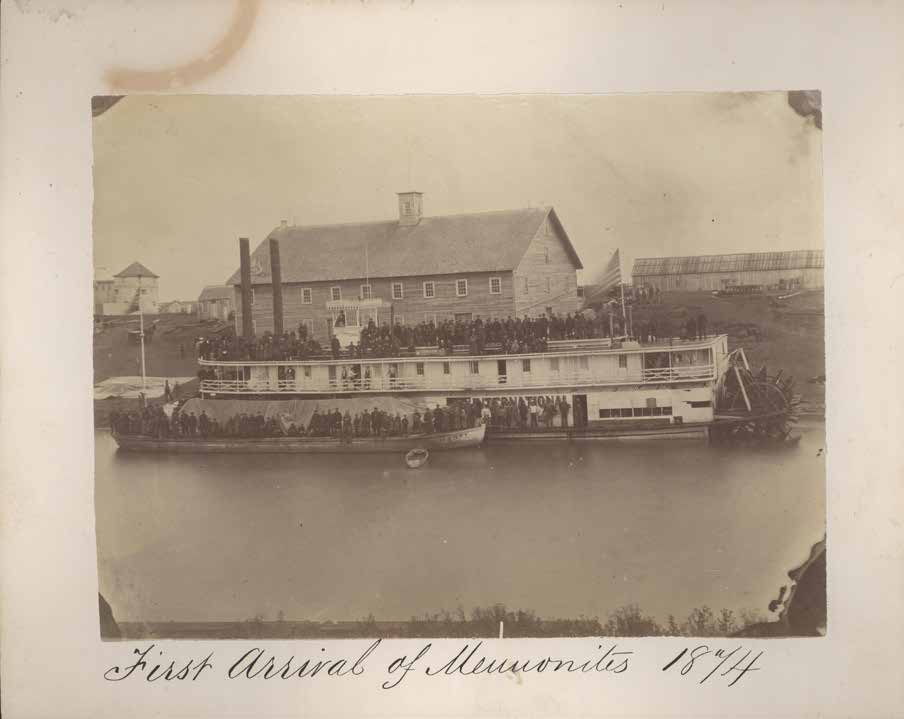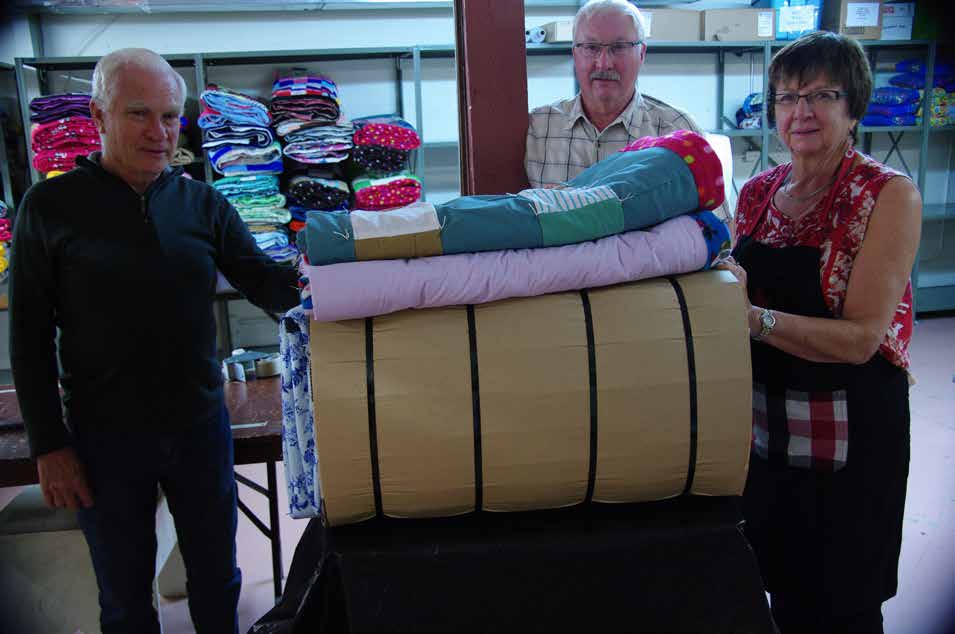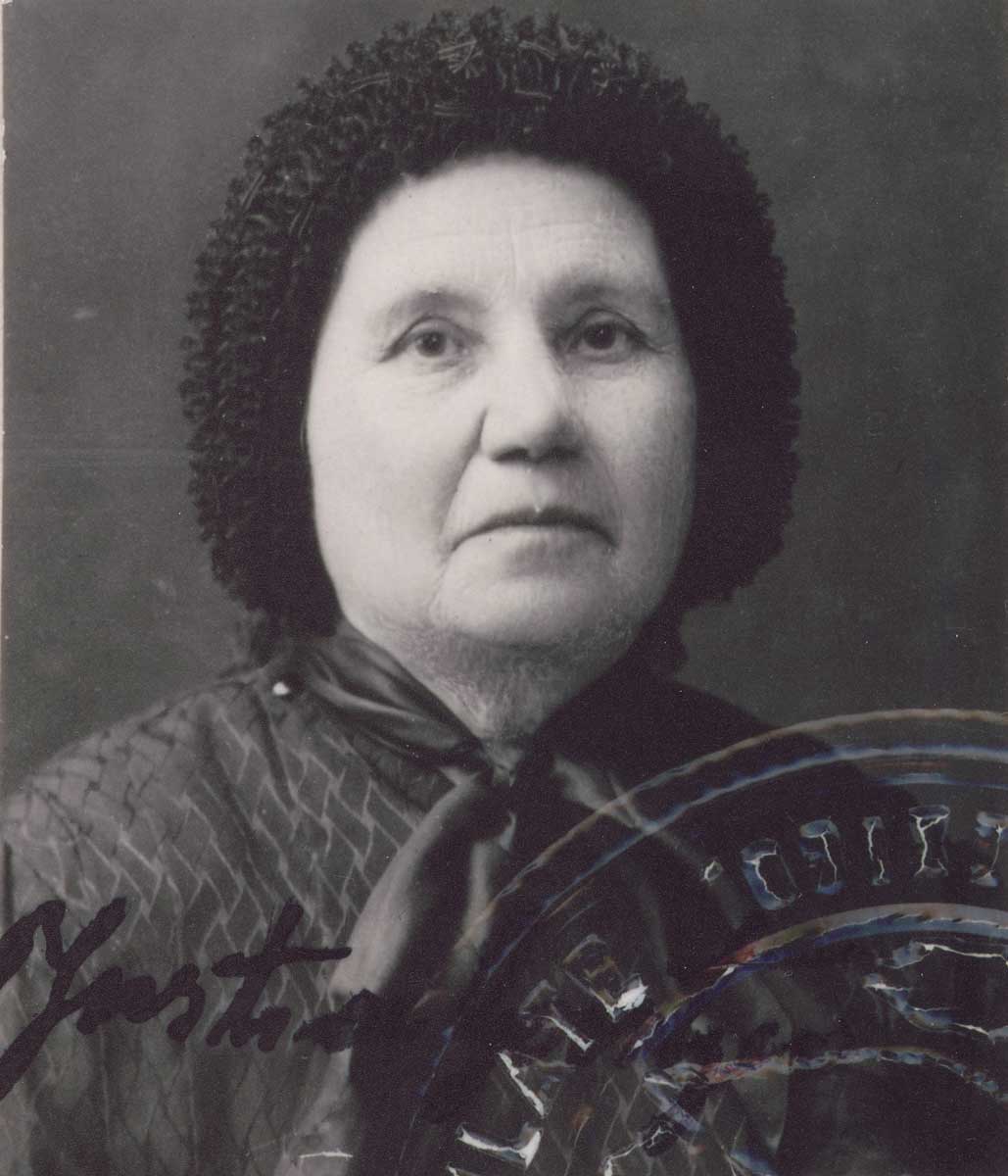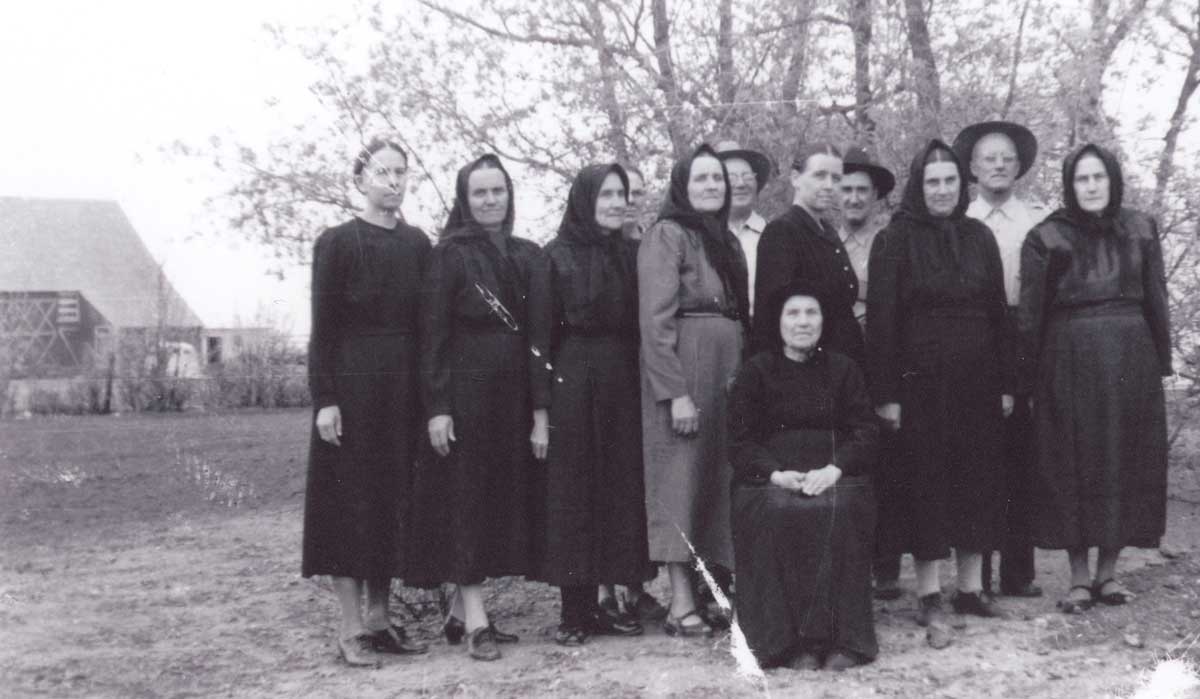Flight & Resilience: Mennonites of Saskatchewan tells the story of those who immigrated to Saskatchewan from Europe to escape political and economic conditions that threatened their lives, conscience and community cohesion. It is about the flight of a people in search of a new home.
The experiences of three women — Maria Pauls Driedger Buhler, Elizabeth Bueckert Fehr and Justina Goertzen — reveal the adversity and tragedies that many Mennonites endured, but more so, the strength and resilience that helped them to survive.
This exhibit was produced by the Diefenbaker Canada Centre in partnership with the Mennonite Historical Society of Saskatchewan and the Mennonite Central Committee of Saskatchewan.
A New Home
The Anabaptist faith family includes Mennonites, Hutterites, and Brethren in Christ. Their beginnings date back to the early 1500s in Holland, Switzerland and Moravia. Some of their beliefs include adult baptism, not engaging in warfare, not swearing the oath, separation of church and state, and having direct contact with God without an intermediary. Those beliefs were considered blasphemous to the established Church, and resulted in the torture and death of many people of the Anabaptist faith. As a result, many fled to countries like Germany, Prussia and later to Russia, the United States and Canada.
The first Mennonites arrived in Saskatchewan around 1895, seeking freedom to worship and to educate their children. They established villages north of Saskatoon and south of Swift Current.
Quilting
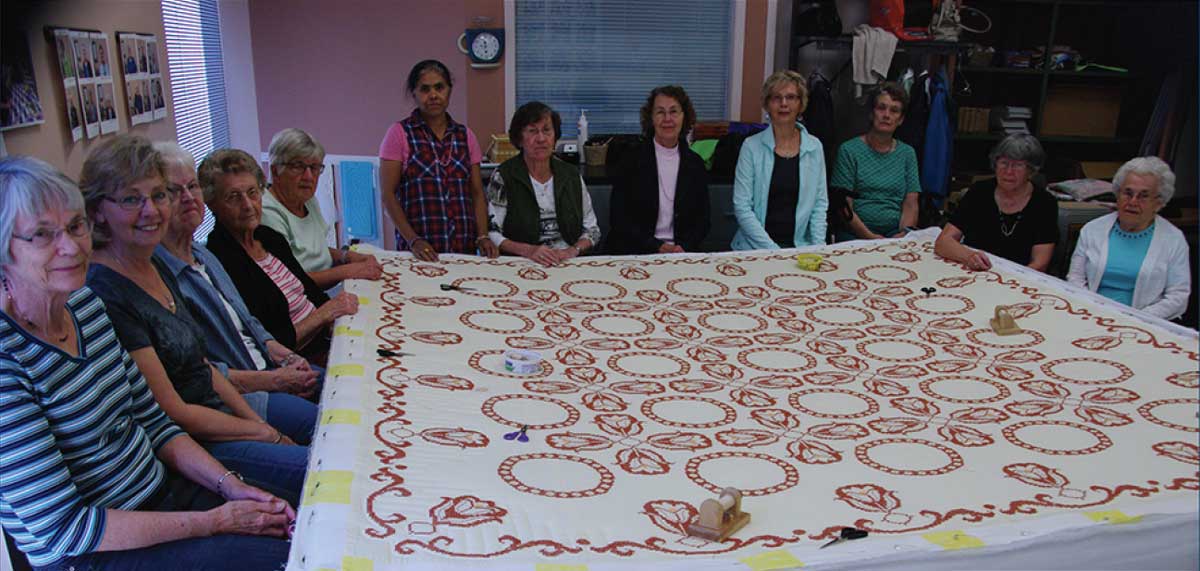 Quilts have always been an integral part of Mennonite life. Beginning as functional items in a home, they have become expressions of creativity and art. Quilts carry layers of meaning in the patterns that are used. They were given as special gifts to family members, especially when a daughter married. While quilts were initially utilitarian in nature, today they are seen as pieces of art. An exceptional quilt can fetch up to $10,000.
Quilts have always been an integral part of Mennonite life. Beginning as functional items in a home, they have become expressions of creativity and art. Quilts carry layers of meaning in the patterns that are used. They were given as special gifts to family members, especially when a daughter married. While quilts were initially utilitarian in nature, today they are seen as pieces of art. An exceptional quilt can fetch up to $10,000.
This quilt was created by Alma Elias, a member of a quilting group known as Piecemakers for Peace. Her Log Cabin pattern was hand-quilted on a hoop frame using more than 220 different fabrics. This design dates back to a time when completed quilt tops were hand-stitched by women to welcome a new family into the Mennonite community.
Each central red square represents the heath, and every narrow strip a log. The log cabin squares are arranged in a barn-raising style. While there is order in placement of light and dark fabrics, there is a random placement of the scraps themselves - hence it is called a scrappy quilt design. This king-size quilt is comprised of only cotton materials.
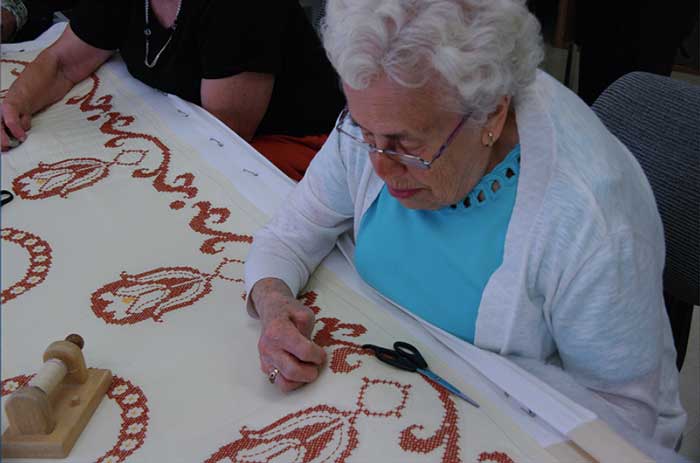 |
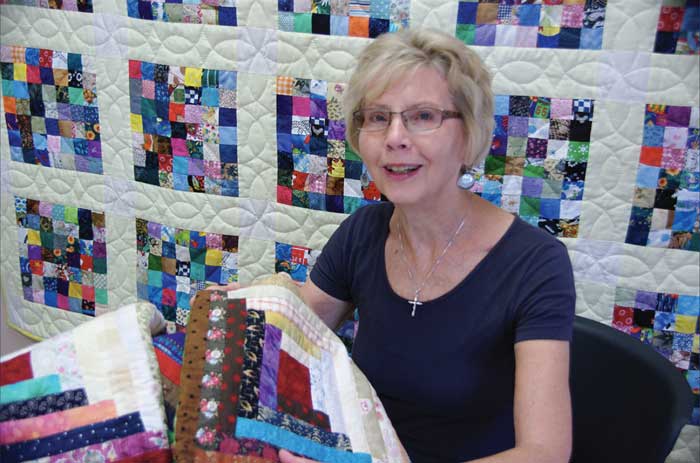 |
Blankets: Comfort for the Needy
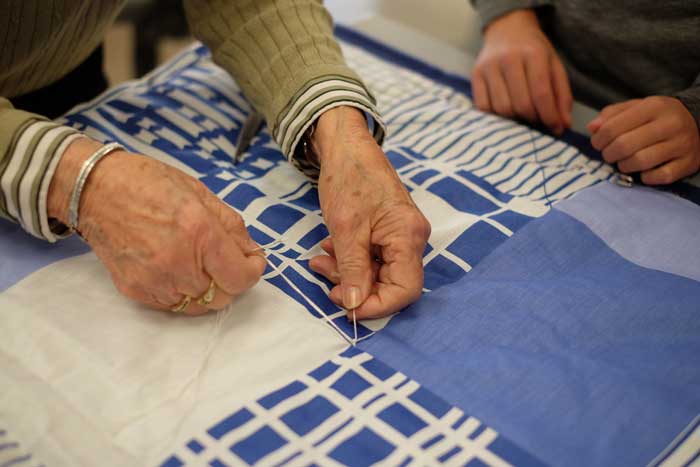 Originally, blankets were made for such uses as bed comforters, crib coverlets, and even winter horse coverings. Older blankets were used to shelter plants against frost. Following a house fire or other tragedy, one of the first items taken to a family was a blanket.
Originally, blankets were made for such uses as bed comforters, crib coverlets, and even winter horse coverings. Older blankets were used to shelter plants against frost. Following a house fire or other tragedy, one of the first items taken to a family was a blanket.
Today blankets like these examples are made by the Mennonite Central Committee for shipment to impoverished places overseas. In the past year more than 4,100 blankets were sent from Saskatchewan to Syria and other countries.
Blankets are sewn together using cotton squares, with a layer of polyester batting, and a flannel backing. The layers are “tied” together by hand-stitching through all three layers. Blanket making is often a community activity. It is not uncommon for a church group to make a hundred blankets over a period of two or three weeks.
 |
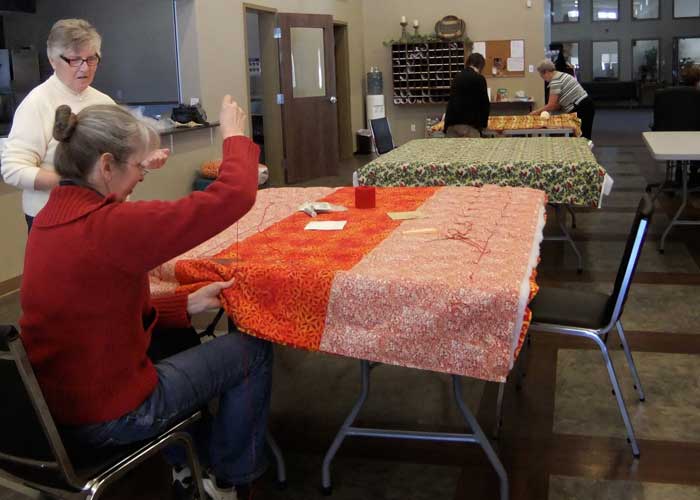 |
Maria Pauls Driedger Buhler
(1907-2002)
-by Jake Buhler
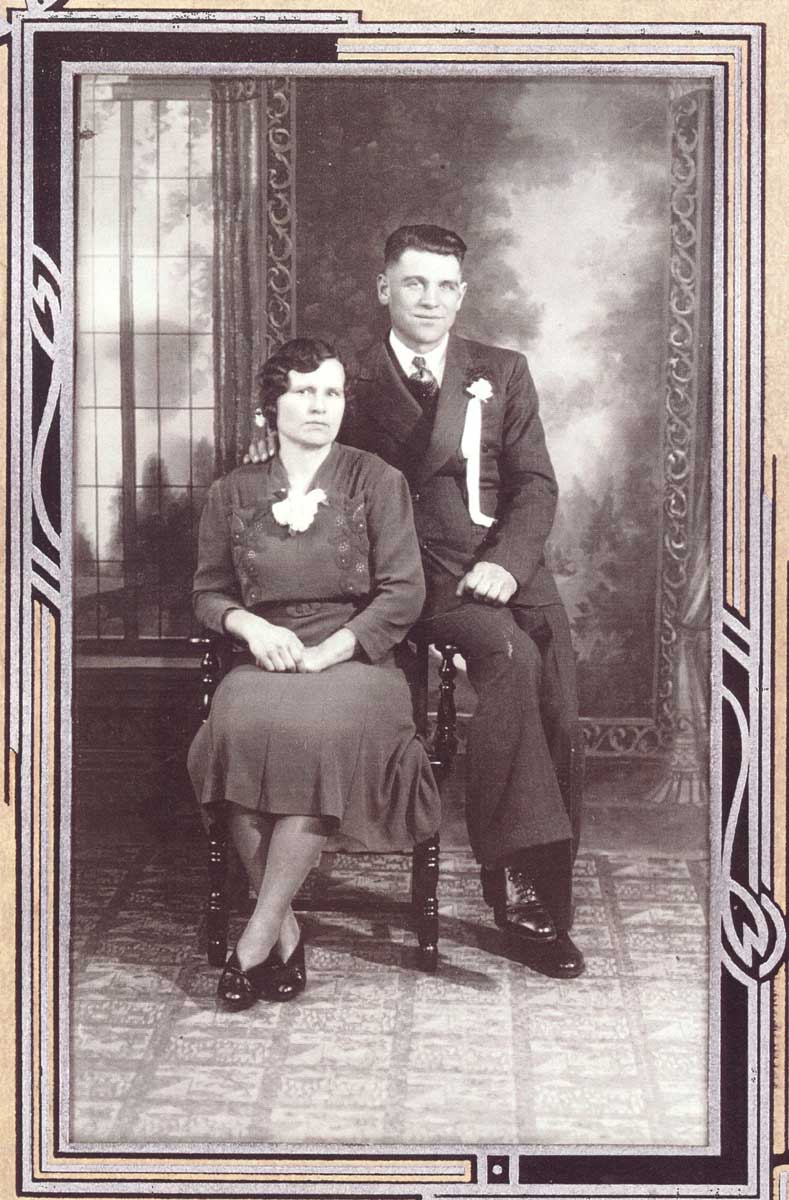 Maria was born in 1907, one of six children, in the Mennonite farming village of Grigorjewka, in South Russia. Life was good, but the 1917 Revolution and disease changed all that.
Maria was born in 1907, one of six children, in the Mennonite farming village of Grigorjewka, in South Russia. Life was good, but the 1917 Revolution and disease changed all that.
The anarchist, Nestor Makhnov, terrorized their village and many others. In 1918, Maria lost her sister and mother to tuberculosis, and her father to influenza. A year later another sister died. Orphaned and devastated, she and her siblings were adopted by grandparents. Compounding that, the children had to witness all of their life’s possessions auctioned off.
Fleeing political tyranny, 20,000 Mennonites immigrated to Canada from Russia in the 1920s. In 1925, Maria and her brother, Jacob joined them. They sailed from Southampton to Quebec City, and then travelled by train to Osler, Saskatchewan.
Assigned as a farm labourer, Maria married her bachelor boss, Cornelius Driedger in 1927, and together they had three sons; Cornelius died in 1939. Two years later, Maria married Bernhard Buhler and four children followed. Bernhard died in 1977.
Maria was devoted to her family and was active in her community as a blanket maker. She frequently visited to the ill and was a volunteer in women’s groups. She was known as Grandma wherever she went. A true matriarch, Maria died surrounded by her large family in 2002 at the age of 96.
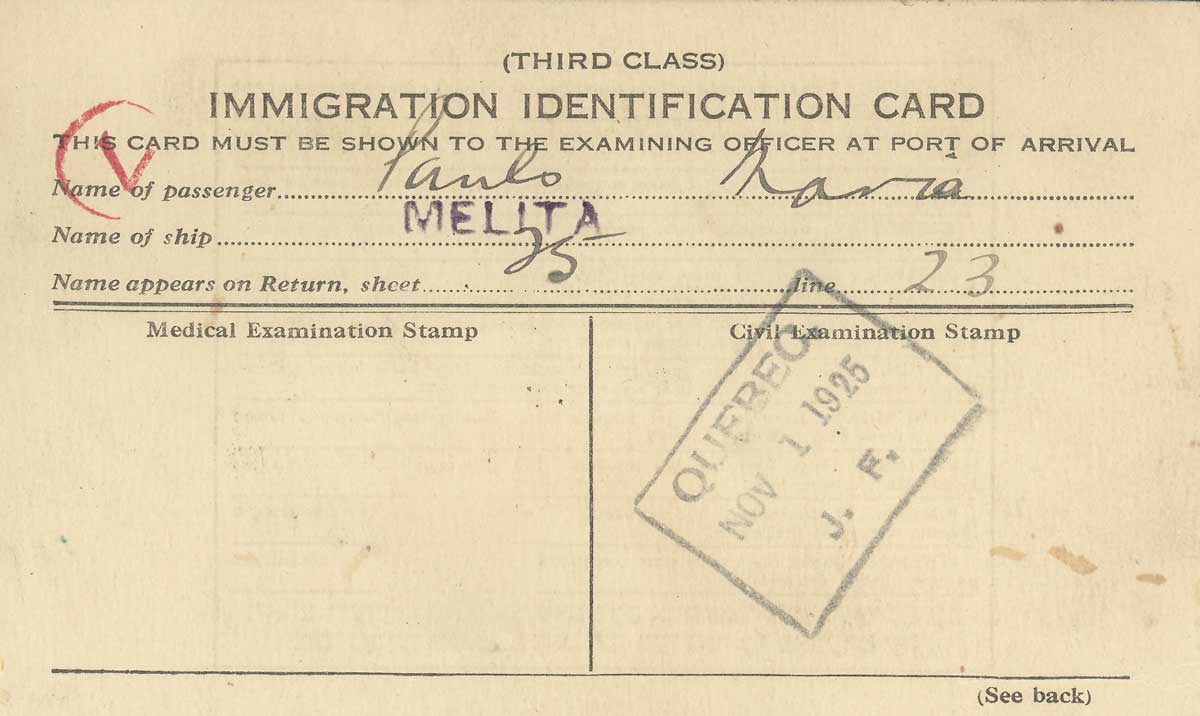 |
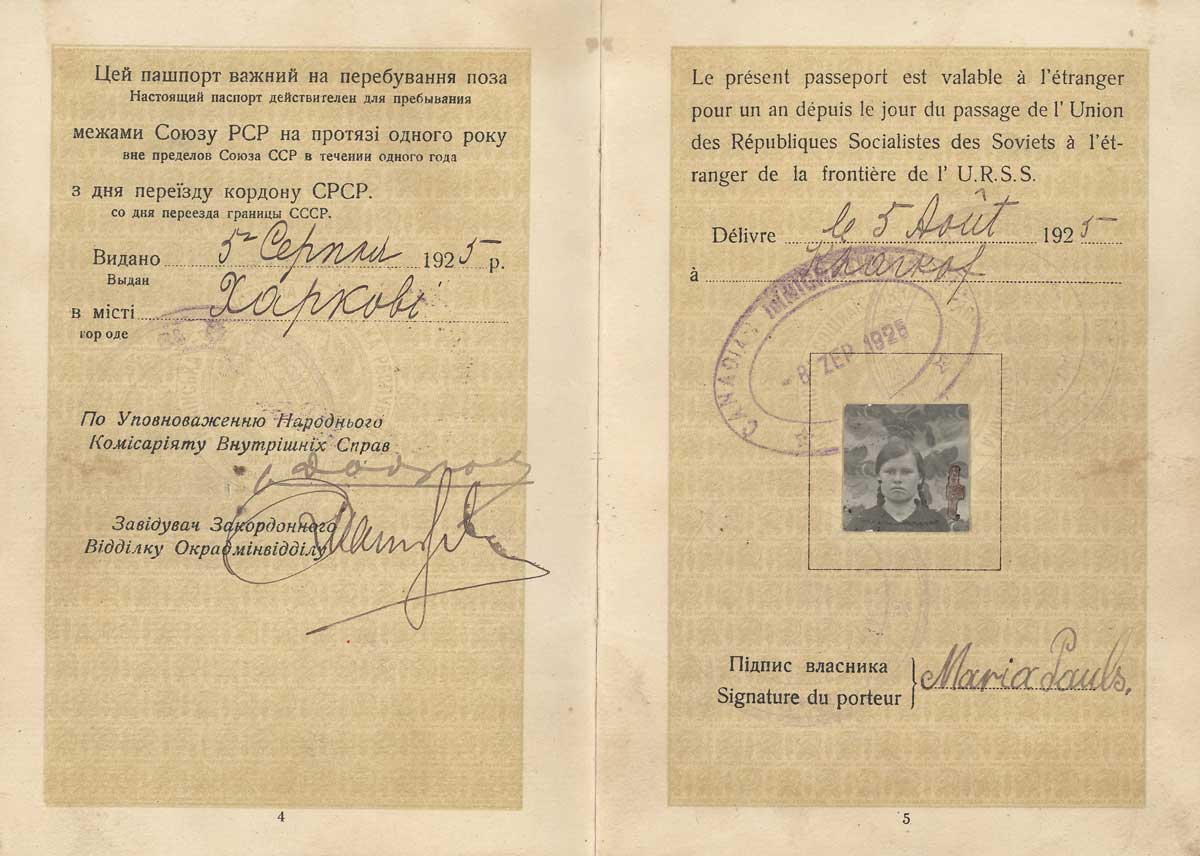 |
Elizabeth Bueckert Fehr
(1905-1983)
- by Leonard Doell
 The Bueckerts emigrated from Russia to Canada in 1899. They homesteaded in the Old Colony Mennonite village of Edenburg, Saskatchewan near Aberdeen. Elizabeth was born in Edenburg in 1905 and attended the Mennonite German school there.
The Bueckerts emigrated from Russia to Canada in 1899. They homesteaded in the Old Colony Mennonite village of Edenburg, Saskatchewan near Aberdeen. Elizabeth was born in Edenburg in 1905 and attended the Mennonite German school there.
When she was about 12-13 years of age she moved with her parents to the Mennonite village of Neuanlage, south of Hague. It is there that she met her future husband Abram C. Fehr, whom she married in 1923. Elizabeth and Abram had a small farm, and Abram worked as a blacksmith.
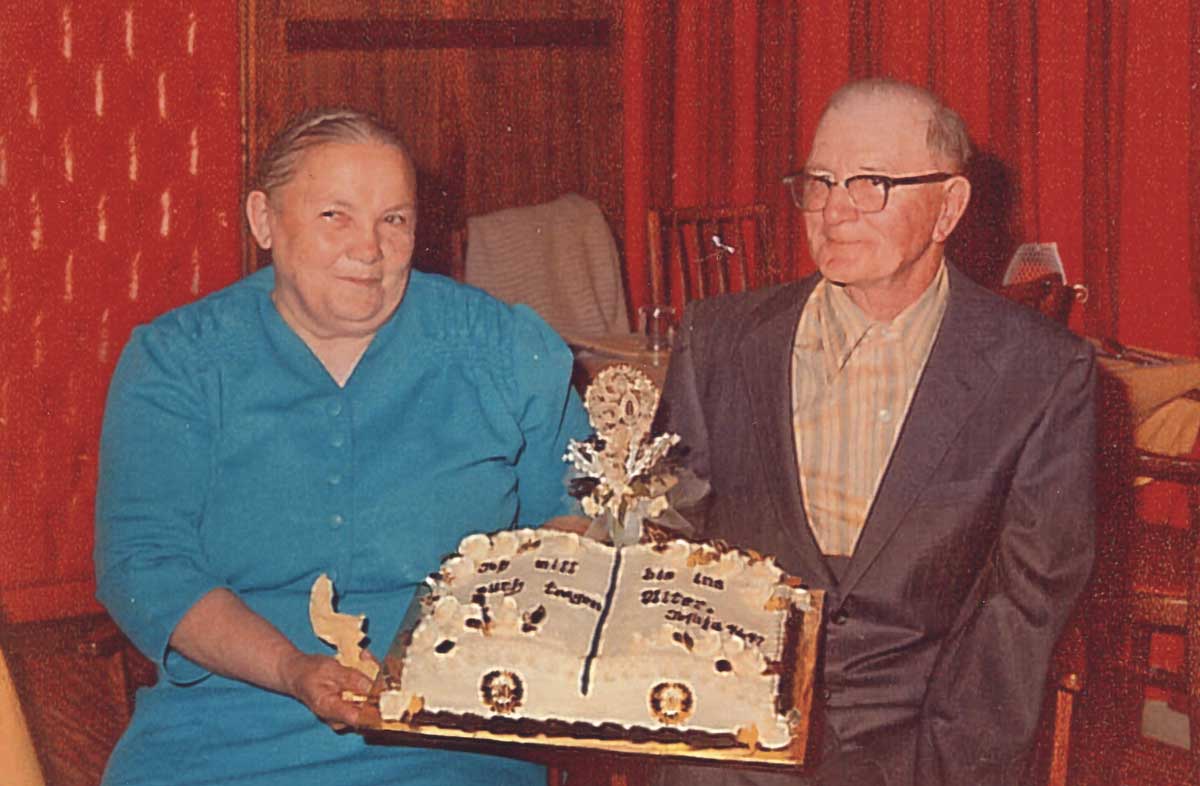
In 1933, the Fehrs moved to Alberta looking for work, they only experienced many hardships there. They were found starving in Edmonton, trying to make it back to Saskatchewan. The local city police and community members took them in, clothed and fed them, and helped them on their way. They made it back to farm at Hague, and Abram returned to blacksmithing and even tried his hand at dentistry.
In spite of all the hard times she faced in life, Elizabeth remained a woman with a strong faith in God, a resilient in spirit, and compassion for those who were poor and suffering. She died in 1983 at the age of 77.
Justina Teichroeb Goertzen
(1876-1957)
- by Dick Braun
Justina was an amazing lady who began her life in a simlin (a sod house dug into the ground) in southern Manitoba. She married Benjamin Goertzen in 1893 and moved to Saskatchewan with him in 1899.
In 1915, Benjamin was called by the church to be the Vorsteher, the man put in charge of conducting the business dealings of the colony, including collecting money for the poor.
Some years later, and due to the position he had held as Vorsteher, Benjamin was chosen to travel to Mexico to explore the possibility of relocating some colonists there. In 1927, the Goertzens moved there, but suffered much adversity, even being attacked by outlaws. After Benjamin died, Justina moved back to Gruenfeldt with her six youngest children.
Justina made important contributions to her community. She was instrumental in finding new land for some Mennonites who were living on the road allowances because they owned no property. Her idea was that these people could gain their dignity back, if only they had somewhere that they could call their own. Justina managed to negotiate a deal with the municipality and a number of mined gravel pits were given to these families to move onto.
Welt Ade, Ich Bin Dein Muede
- Johann Georg Albinus (1624 - 1679)
1. Welt ade, ich bin dein muede, ich will nach dem Himmel zu da wird sein der rechte Friede und die stolze Seelenruh. Welt, bei dir ist Krieg und Streit, nichts denn lauter Eitelkeit, in dem Himmel allezeit Friede, Ruh und Seligkeit.
2. Wenn ich werde dahin kommen, bin ich aller Krankheit los und der Traurigkeit entnommen, ruhe sanft in Gottes Schoss. In der Welt ist Angst und Not, endlich gar der bittre Tod aber dort ist allezeit Friede, Ruh und Seligkeit.
3. Nichts ist hier denn lauter Weinen,keine Freude bleibet nichtwill uns gleich die Sonne scheinen,so verhemmt die Nacht das Licht. Welt bei dir ist Angst und NothSorgen und der bittre Tod,in dem Himmel allezeitFriede, Ruh und Seligkeit.
4. O wer nur dahin gelanget,wo jetzund der schoene Chorin vergueldten Kronen pranget und die Stimme schwingt empor!Denn die Welt hat Krieg und Streit,all ihr Tun ist Eitelkeitin dem Himmel allezeit Friede, Ruh und Seligkeit.
5. Zeit, wann wirst du doch anbrechen?Stunden, o wann schlaget ihr,drinnen ich mich kann besprechen mit dem Schnsten fuer und fuer?Welt, du hast nur Sturm und Streit,lauter Qual und Traurigkeitaber dort ist allezeitFriede, Freud und Seiligkeit.
6. Jetzt will ich mich fertig machen,dass mein Tun vor Gott besteh,dass, wenn alles wird zerkrachen,es heisst Komme! und nicht Geh! Welt, bei dir ist Angstgeschrei,Sorge, Furcht und Heuchelei,in dem Himmel allezeitFriede, Ruh und Seligkeit.
1. World, farewell! Of thee I’m tired, Now t’ward heav’n my way I take; There is peace the long-desired, Lofty calm that naught can break; World, with thee is war and strife, Thou with cheating hopes art rife, But in heaven is no alloy, Only peace and love and joy.
2. When I reach that home of gladness, I shall feel no more this load, Feel no sickness, want, or sadness, Resting in the arms of God. In the world woes follow fast, And a bitter death comes last, But in heaven shall naught destroy Endless peace and love and joy.
3. Here is naught but care and mourning,
Comes a joy, it will not stay;
Fairly shines the sun at dawning,
Night will soon o’ercloud the day;
World, with thee we weep and pine, Gnawing care and grief are thine; But in heaven is no alloy, Only peace and love and joy.
4. Well for him whom death has landed Safely on yon blessed shore, Where, in joyful worship banded, Sing the faithful evermore; For the world hath strife and war, All her works and hopes they mar, But in heaven is no alloy, Only peace and love and joy.
5. Time, thou speedest on but slowly, Hours, how tardy is your pace, Ere with Him, the High and Holy, I hold converse face to face: World, with partings thou art rife, Filled with tears and storms and strife; But in heaven can naught destroy Endless peace and love and joy.
6. Therefore will I now prepare me, That my work may stand His doom, And when all is sinking round me, I may hear not “go” but “come”! World, the voice of grief is here, Outward seeming, care, and fear, But in heaven is no alloy, Only peace and love and joy!

